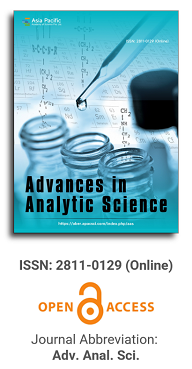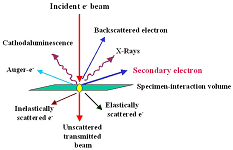
Asia Pacific Academy of Science Pte. Ltd. (APACSCI) specializes in international journal publishing. APACSCI adopts the open access publishing model and provides an important communication bridge for academic groups whose interest fields include engineering, technology, medicine, computer, mathematics, agriculture and forestry, and environment.

Occurrence of varroasis and nosemosis in Apis mellifera hives in Tomalá municipality, Honduras
Vol 6, Issue 2, 2025
Download PDF
Abstract
Beekeeping in Honduras represents a significant activity within the livestock sector, facing threats from pests and diseases that hinder its development and productivity. Objective: To determine the parasitic load of Varroa destructor and Vairimorpha (Nosema) spp. in Apis mellifera hives in Tomalá municipality, Lempira department, Honduras, and its association with hygienic behavior, productivity, and the presence of other pests. Materials and methods: The study analyzed 57 hive samples collected from 19 apiaries. The infestation rate of V. destructor was determined. The average infection rate of Vairimorpha spp. was assessed using the Cantwell method. Associations between parasitic loads and productivity, hygienic behavior, and other pests were evaluated through stratified analysis based on the application (or not) of treatment against Varroa spp. Associations were determined using the non-parametric Mann-Whitney U and Kruskal-Wallis tests. Results: Infestation rates for V. destructor were 3.48% in adult bees and 6.82% in larval stages. The use of chemical treatment showed no association with the V. destructor infestation rate in either larvae or adults (p ≥ 0.05). However, the presence of the small hive beetle (SHB) was associated with higher V. destructor infestation in larvae (p < 0.007) within untreated hives. The Vairimorpha spp. infection level was classified as very light, with an average of 5 × 10⁴ spores per sample. The Vairimorpha spp. load showed no association with the variables studied (p ≥ 0.05). Conclusion: The results indicate that varroosis is an important disease in Tomalá municipality, Lempira department, Honduras, associated with hygienic behavior and the presence of SHB in hives. Nosemosis exhibited a very light level of infection.
Keywords
References
1. Martínez-López V, Ruiz C, De la Rúa P. Migratory beekeeping and its influence on the prevalence and dispersal of pathogens to managed and wild bees. International Journal for Parasitology: Parasites and Wildlife. 2022; 18: 184-193. doi: 10.1016/j.ijppaw.2022.05.004
2. Secretariat of Agriculture and Livestock. Beekeeping-Honey: Situation Analysis. Agricultural Planning and Management Evaluation Unit (UPEG). Available online: https://www.upeg.sag.gob.hn/wp-content/uploads/2021/07/AC-MIEL-V20.2.pdf (accessed on 20 April 2025).
3. Traynor KS, Mondet F, de Miranda JR, et al. Varroa destructor: A Complex Parasite, Crippling Honey Bees Worldwide. Trends in Parasitology. 2020; 36(7): 592-606. doi: 10.1016/j.pt.2020.04.004
4. Düttmann C, Flores B, Sheleby-Elías J, et al. Morphotype and haplotype identification of Varroa destructor (Acari: Varroidae), and its importance for apiculture in Nicaragua. Experimental and Applied Acarology. 2021; 83(4): 527-544. doi: 10.1007/s10493-021-00603-9
5. Ramsey SD, Ochoa R, Bauchan G, et al. Varroa destructor feeds primarily on honey bee fat body tissue and not hemolymph. Proceedings of the National Academy of Sciences. 2019; 116(5): 1792-1801. doi: 10.1073/pnas.1818371116
6. Invernizzi Castillo C, Antúnez K, Arredondo D, et al. Sanitary situation of honey bees in Uruguay: Novelties of the last decade (Spanish). Veterinaria (Montevideo). 2022; 58(217): e20225821704. doi: 10.29155/vet.58.217.4
7. Emsen B, Guzman-Novoa E, Kelly PG. Honey production of honey bee (Hymenoptera: Apidae) colonies with high and low Varroa destructor (Acari: Varroidae) infestation rates in eastern Canada. The Canadian Entomologist. 2013; 146(2): 236-240. doi: 10.4039/tce.2013.68
8. Khan KA, Ghramh HA. An investigation of the efficacy of hygienic behavior of various honey bee (Apis mellifera) races toward Varroa destructor (Acari: Varroidae) mite infestation. Journal of King Saud University - Science. 2021; 33(3): 101393. doi: 10.1016/j.jksus.2021.101393
9. Salvioni C, Champetier A. A Survey of Experts’ Opinions on the Management of the Small Hive Beetle in Italy. Sustainability. 2022; 14(12): 7004. doi: 10.3390/su14127004
10. Pusceddu M, Cini A, Alberti S, et al. Honey bees increase social distancing when facing the ectoparasite Varroa destructor. Science Advances. 2021. doi: 10.1126/sciadv.abj1398
11. Botías C, Martín-Hernández R, Barrios L, et al. Nosema spp. infection and its negative effects on honey bees (Apis mellifera iberiensis) at the colony level. Veterinary Research. 2013; 44(1): 25. doi: 10.1186/1297-9716-44-25
12. Rodríguez-García C, Heerman MC, Cook SC, et al. Transferrin-mediated iron sequestration suggests a novel therapeutic strategy for controlling Nosema disease in the honey bee, Apis mellifera. PLOS Pathogens. 2021; 17(2): e1009270. doi: 10.1371/journal.ppat.1009270
13. Higes M, Martín‐Hernández R, Botías C, et al. How natural infection by Nosema ceranae causes honeybee colony collapse. Environmental Microbiology. 2008; 10(10): 2659-2669. doi: 10.1111/j.1462-2920.2008.01687.x
14. Higes M, Martín‐Hernández R, Martínez‐Salvador A, et al. A preliminary study of the epidemiological factors related to honey bee colony loss in Spain. Environmental Microbiology Reports. 2010; 2(2): 243-250. doi: 10.1111/j.1758-2229.2009.00099.x
15. Municipality of Tomalá. Municipal Development Plan Tomalá, Lempira 2015–2025. Available online: https://www.sgjd.gob.hn/biblioteca-virtual/docspdm/pdm-certificados/lempira-pdm-certificados/1282-pdm-tomala-lempira/file (accessed on 20 April 2025).
16. National Institute of Statistics. Tomalá, Lempira. Available online: http://ine.gob.hn/ (accessed on 20 April 2025).
17. Inter-American Institute for Cooperation on Agriculture. Manual of apiculture diseases. Available online: https://repositorio.iica.int/handle/11324/18967 (accessed on 20 April 2025).
18. Fuchs S. Preference for drone brood cells by Varroa jacobsoni Oud. in colonies of Apis mellifera carnica. Apidologie. 1990; 21(3): 193-199. doi: 10.1051/apido:19900304
19. De Jong D, De Andrea Roma D, Gonçalves LS. A comparative analysis of shaking solutions for the detection of Varroa jacobsoni on adult honeybees. Apidologie. 1982; 13(3): 297-306. doi: 10.1051/apido:19820308
20. Buawangpong N, de Guzman LI, Khongphinitbunjong K, et al. Prevalence and reproduction of Tropilaelaps mercedesae and Varroa destructor in concurrently infested Apis mellifera colonies. Apidologie. 2015; 46(6): 779-786. doi: 10.1007/s13592-015-0368-8
21. Valladares A, Perdomo BR, Lanza M, et al. Protocol for laboratory diagnostic techniques for apiculture diseases and pests. International Regional Organization for Agricultural Health; 2015.
22. Duquesne V, Gastaldi C, Del Cont A, et al. An international inter-laboratory study on Nosema spp. spore detection and quantification through microscopic examination of crushed honey bee abdomens. Journal of Microbiological Methods. 2021; 184: 106183. doi: 10.1016/j.mimet.2021.106183
23. Newton DC, Ostasiewski NJJ. A simplified bioassay for behavioral resistance to American foulbrood in honey bees. American Bee Journal. 1986.
24. Sanabria JL, Demedio J, Pérez T, Infestation indices of Varroa destructor in hives without control measures. Revista de Salud Animal. 2015.
25. González-Cabrera J, Rodríguez-Vargas S, Davies TGE, et al. Novel Mutations in the Voltage-Gated Sodium Channel of Pyrethroid-Resistant Varroa destructor Populations from the Southeastern USA. PLOS ONE. 2016; 11(5): e0155332. doi: 10.1371/journal.pone.0155332
26. Osejo Uriarte HJ. Haplotypes of Varroa destructor related to the degree of infestation in hives of Apis mellifer adeapiaries sentinel from Nicaragua, 2015 to 2016 (Spanish). Available online: http://riul.unanleon.edu.ni:8080/jspui/handle/123456789/6505 (accessed on 20 April 2025).
27. Rasolofoarivao H, Clémencet J, Ravaomanarivo LHR, et al. Spread and strain determination of Varroa destructor (Acari: Varroidae) in Madagascar since its first report in 2010. Experimental and Applied Acarology. 2013; 60(4): 521-530. doi: 10.1007/s10493-013-9658-x
28. Mortensen AN, Jack CJ, Bustamante TA, et al. Effects of Supplemental Pollen Feeding on Honey Bee (Hymenoptera: Apidae) Colony Strength and Nosemaspp. Infection. Journal of Economic Entomology. 2018; 112(1): 60-66. doi: 10.1093/jee/toy341
29. Al-Ghamdi AA, Abou-Shaara HF, Ansari MJ. Effects of sugar feeding supplemented with three plant extracts on some parameters of honey bee colonies. Saudi Journal of Biological Sciences. 2021; 28(4): 2076-2082. doi: 10.1016/j.sjbs.2021.02.050
30. Annoscia D, Zanni V, Galbraith D, et al. Elucidating the mechanisms underlying the beneficial health effects of dietary pollen on honey bees (Apis mellifera) infested by Varroa mite ectoparasites. Scientific Reports. 2017; 7(1). doi: 10.1038/s41598-017-06488-2
31. Calderón RA, van Veen JW, Sommeijer MJ, et al. Reproductive biology of Varroa destructor in Africanized honey bees (Apis mellifera). Experimental and Applied Acarology. 2009; 50(4): 281-297. doi: 10.1007/s10493-009-9325-4
32. Calderón RA, Padilla S, Ramírez M. Preliminary study on the presence of bee diseases in swarms of Africanized honey bees (Apis mellifera) in different areas of Costa Rica (Spanish). Ciencias Veterinarias. 2019; 37(1): 13-25. doi: 10.15359/rcv.37-1.2
33. Fleites-Ayil FA, Quezada-Euán JJG, Medina-Medina LA. Onset of foraging and lifespan of Africanized honey bees (Apis mellifera) infected with different levels of Nosema ceranae spores in Neotropical Mexico. Apidologie. 2018; 49(6): 781-788. doi: 10.1007/s13592-018-0602-2
34. Cueto González SA, López Valencia G, Orozco Cabrera C, et al. Prevalence and geographical distribution of Nosema apis and Nosema ceranae in apiaries of Northwest Mexico using a duplex real-time PCR with melting-curve analysis. Journal of Apicultural Research. 2019; 59(2): 195-203. doi: 10.1080/00218839.2019.1676999
Supporting Agencies
Copyright (c) 2025 Author(s)
License URL: https://creativecommons.org/licenses/by/4.0/

This site is licensed under a Creative Commons Attribution 4.0 International License (CC BY 4.0).
1.jpg)
Prof. Sivanesan Subramanian
Anna University, India





.jpg)
